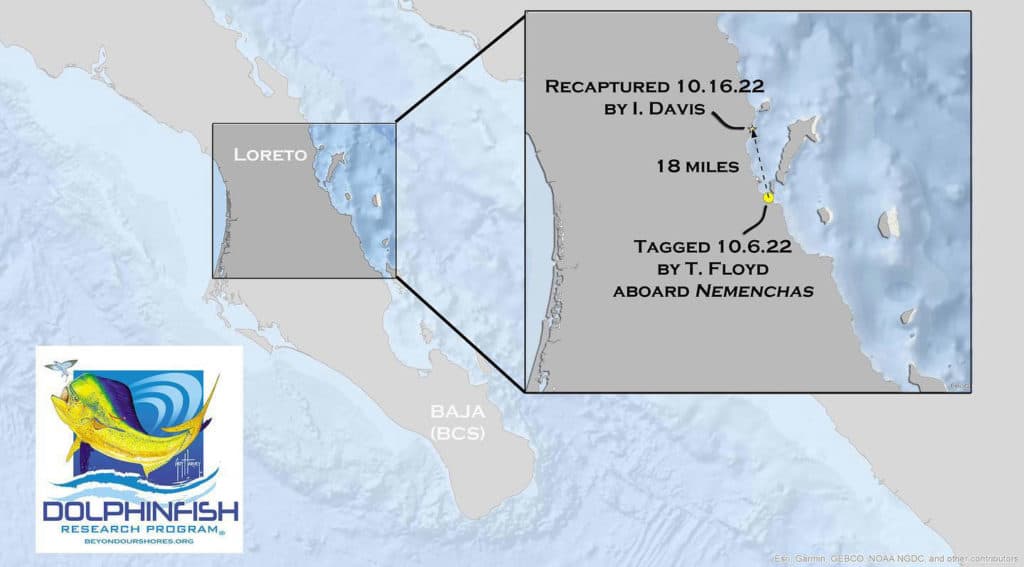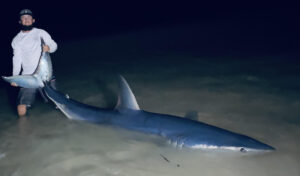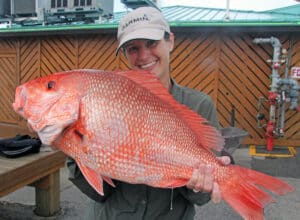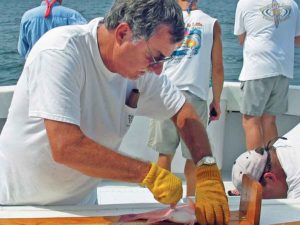
Few fish are prized more for their sporting ocean fight, speed, high-leaping ability and good-taste at the end of a fork as the dolphin, or mahi-mahi.
Biologists and fisheries scientists have known for years that pelagic, ocean-ranging dolphin travel far and fast, and grow at remarkable speed to hefty blue-water battlers.
Leading in the on-going scientific work learning about dolphin is the Dolphin Research Program (DR), that has a wide range of fishermen tagging and releasing dolphin they catch, so fish travels can be documented. So far this year about two dozen tags have been returned from dolphin caught at many locations, representing nearly a 5 percent recovery rate of tagged fish.
According to a DR report on Oct. 15, the group received its 22nd recapture of a tagged dolphin this year. It came from a commercial fishermen at Puerto Plata, located in the Dominican Republic. The dolphin was caught at a “fish aggregating device” (FAD) 19 miles offshore. What makes this tagged fish interesting is it was tagged by another fisherman Sept. 15 at a different FAD northwest of Punta Cana, Dominican Republic.
The straight-line distance between the two Dominican Republic FADs is nearly 200 miles. DR says that the average travel of this fish was just over 6.5 miles per day, and in a month the fish grew an astounding two inches.
On Oct. 25 DR got its 24th dolphin recapture of the year, this time in the Pacific Ocean. They report that angler Todd Floyd had a RD tagging kit and during a recent trip to the Gulf of California tagged several fish and released them. Amazingly, just 10 days later, one tagged dolphin was recovered caught off Loreto, Mexico. Most startling about the recovery of the 24-inch dolphin that Floyd had tagged is it had grown one full inch in just over one week.
That phenomenal growth rate of dolphin shows the fish are indeed piscatorial eating machines. That’s one reason they rate so high with anglers, as the fish feed well and often, and take a wide range of cast and trolled lures as well as live and rigged baits.
Not all details are available yet, but DR says that a recaptured dolphin was recorded the last week in October off Jaco, Costa Rica, in the Pacific Ocean west of the country’s capital city of San Jose. The fish is believed to have been perhaps tagged and released off Ecuador last February – a distance of about 500 miles.
In July of this year a dolphin tagged near Ft. Lauderdale in June 2021 as a 16-incher was recaught off Venezuela – 374 days later after wandering open blue water. In that short span of time the dolphin grew to 57 inches long, and weighed 58 pounds.
Tagging kits for dolphin are available from DR through their website or Facebook page, and anglers are encouraged to participate to further the knowledge of this remarkable ocean-roaming gamefish. Rewards for returned dolphin tags also are made by DR.








